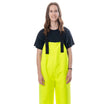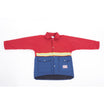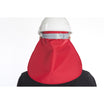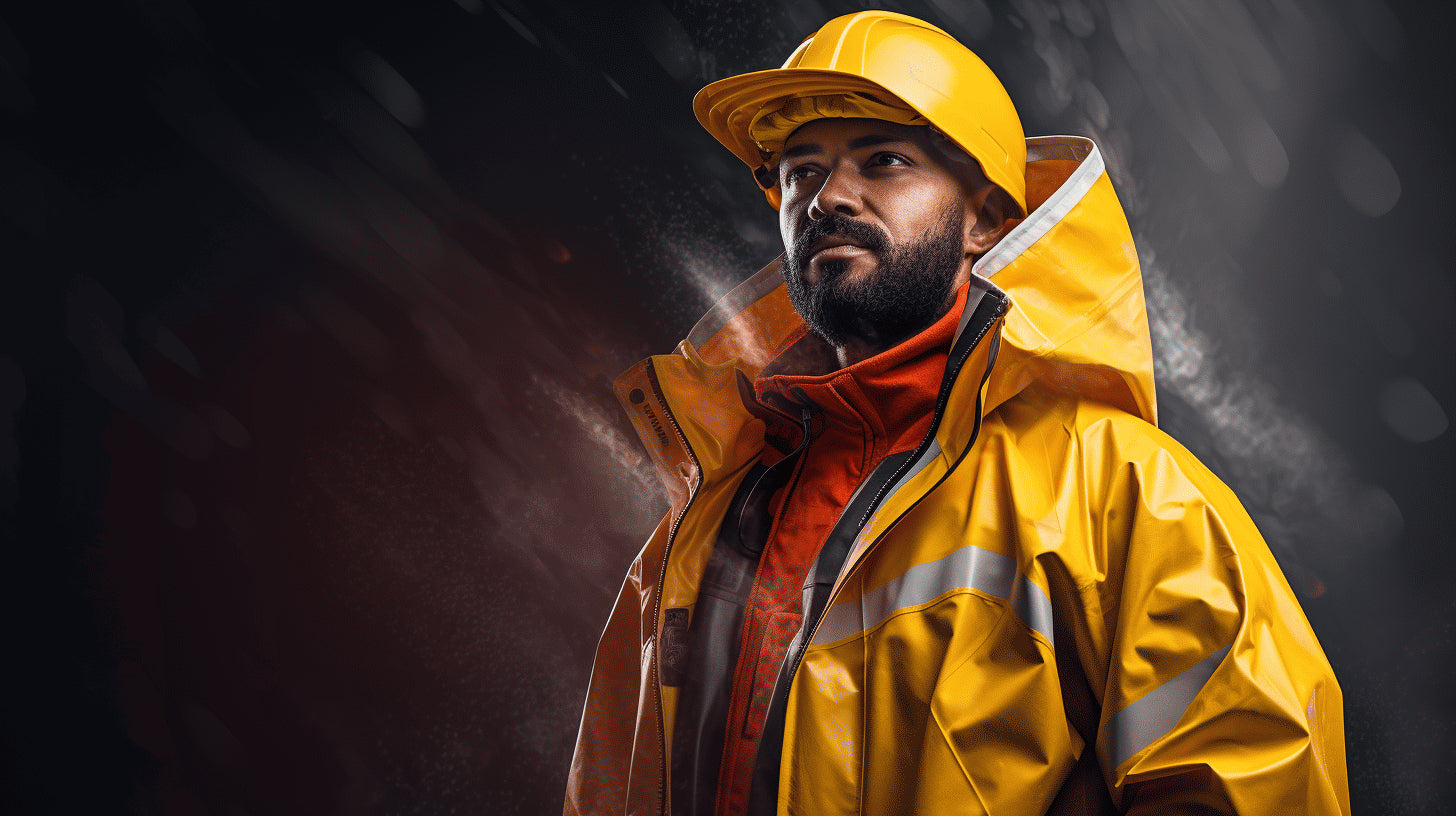Immerse yourself in the world of durable rain gear designed for construction workers. As we journey through this guide, we'll delve into the essentials of high-quality rainwear, from the reasons behind the need for sturdy gear to the top materials used in making such equipment.
Rain clouds on the horizon shouldn't be a reason to delay construction projects. That's why having reliable rain gear is not a luxury but a necessity for construction workers. By the end of this concise guide, you'll have an in-depth understanding of how rain gear supports safety at work sites, the latest technological advancements enhancing comfort and safety, and the importance of accessibility to different types of rainwear.
Get ready to navigate through the storm with unwavering confidence. Let's dive in, shall we?
Understanding The Need For Durable Rain Gear
The race against nature is an age-old contest that has led humans to create ingenious solutions to protect themselves from varying weather conditions. One of the most pressing challenges we face is staying dry during the rain. Exploring this quandary warrants a conversation on the importance of durable rain gear. Rain gear not only shields us from personal discomfort but more significantly, it ensures safety for individuals whose professions mandate working outdoors, come rain or shine. With the right rain gear, inclement weather conditions needn't halt a day's work.Understanding Material Selections
The first cornerstone in finding the right rain gear lies in understanding materials. Studious selection of high-quality materials is paramount. Gear selection should not only lean on the waterproof quality but also evaluate other factors like breathability, wind resistance, and durability. Commonly favored materials include:- Nylon: Durable, lightweight, and offering a satisfactory water resistance, making it a reliable base material.
- Polyester: Noted for its strength, this material is commonly used alongside nylon to bolster overall durability.
- Gore-Tex: Known for its high-end appeal due to its superior wind and waterproof qualities without compromising breathability.
Workplace Hazards Mandating Rain Gear Usage
The dialogue on rain gear isn't confined to battling outdoor elements. It extends into the realm of workplace safety. Several industries like construction, maritime, and outdoor event management, among others, demand the need for rain gear. The necessity can be traced to how wet clothing can lead to:- Increased likelihood of contracting hypothermia or other cold-related ailments
- Visibility issues, increasing the risk of accidents
- The discomfort leading to decreased productivity
Materials For Rain Gear
In the face of fickle weather conditions, having the right rain gear can make all the difference. But, remember, not all rain gear is created equal. The secret ingredient lies in the material. Various fabrics have unique qualities that determine how well they endure against the whims of weather. The following discussion will break down five widely-used materials for crafting high-quality rain gear: Polyvinyl Chloride (PVC), Gore-Tex, Nylon, Polyester, and well-woven, treated cotton.
Polyvinyl Chloride (PVC)
PVC, an excellent material choice for those who prioritize durability and waterproofing, is a heavyweight in the rain gear domain. With this robust fabric, you'll enjoy consistent water protection, making it perfect for those who work in wet, muddy conditions. Its popularity in construction rain jackets is no surprise since PVC coated material provides absolute waterproofing.
Gore-Tex
Next up is Gore-Tex, a high-tech fabric known for its breathability and water resistance. Crafted from layered synthetic materials, it acts as a waterproof, windproof, breathable membrane. The tiny pores in the material prevent water droplets from seeping in, yet allow water vapor to escape, keeping you dry without compromising comfort.
Nylon
Nylon presents itself as a versatile and practical option. While it does not solely guarantee waterproof protection, when treated with a water-resistant coating, it can stand up to moderate rain. Lightweight and durable, nylon proves useful for creating packable and portable rain gear.
Polyester
Polyester, on occasion underrated, deserves recognition not just for its water-resistant attributes but also for its suitability in winter wear. For construction workers braving the cold, polyester and acrylic rain gear offer a double whammy of protection against rainfall and the bite of winter winds.
Well-Woven and Treated Cotton
Let's not forget about well-woven and treated cotton, a classic choice. Though not the first call for impenetrable water defence, when expertly crafted, cotton can offer a degree of water resistance. Plus, its breathable and comfortable weave meets the needs of those looking for a snug fit.
In conclusion, it's important to note that the best fabric for your rain gear depends on the needs set by your weather and activity intensity. For instance, neoprene-lined rain gear is a solid choice for waterproof and durability attributes, although it falls behind in breathability. Either way, acquiring rain gear made from durable, waterproof, yet lightweight and breathable materials will provide the perfect balance for whatever the weather brings.
Importance of High-Visibility Rain Gear
When it comes to safety considerations for outdoor professionals or enthusiasts braving the elements, high-visibility rain gear is an underestimated champion. The charm of high-visibility or "hi-vis" rain gear is not just its distinctive neon color or reflective properties; it represents a blend of innovation and functionality aimed at enhancing safety in dangerous weather conditions. It provides immediate identification in low-light conditions, ensuring the wearer is seen, avoiding accidents, and ultimately saving lives.
Enhancement of Safety in Dangerous Conditions
Safety is paramount in hazardous conditions. Workers in various industries, like construction or traffic control, regularly find themselves facing the unpredictability of the weather as they perform their duties. Hi-vis rain gear is designed to stand out clearly against any background through the day or night, shining a light on safety.
Here's why hi-vis rain gear is important for enhancing safety:
- Visibility: Rainy or foggy conditions often reduces visibility. The bright neon colours, usually fluorescent yellow or orange, combined with reflective strips, guarantees the wearers are spotted easily, reducing the chances of mishaps.
- Distinguishability: Often in complex situations like construction sites or roadside work, it becomes necessary for people to quickly distinguish between workers and their surroundings. Hi-vis rain gear fulfills this role effectively.
- Standard compliance: Many industrial jobs mandate the use of high-visibility clothing as a part of their safety regulations. Using certified hi-vis rain gear ensures compliance to safety standards, providing peace of mind for both employers and employees.
The future brings exciting possibilities for hi-vis rain gear. The global high visibility rain suit market is consistently expanding in response to heightened safety consciousness and innovation-driven product evolution. Therefore, this somehow unsung hero in workwear is likely to continue to illuminate the way forward in safety, not just for construction workers, but for everyone braving adverse weather conditions on the job or during leisure pursuits.
Being aware and prepared is the cornerstone of safety. Gearing up with the proper high-visibility rain attire is an investment in safety, an assertion that every life is valuable, and that caution hasn’t been thrown to the wind. It’s a clear sign that in the face of danger, we have chosen preparedness, clearly lighting the path to safety in hazardous conditions. Investing in hi-vis rain gear is, without doubt, investing in safety!
Latest Advancements in Rain Gear Technology for Enhanced Comfort and Safety
Rainy days and their inherent challenges need not dampen your spirits or disrupt your outdoor activities anymore—thanks to the latest advancements in rain gear technology. Unpredictable weather forecasts can dictate your schedule no more! With the burgeoning developments in the rain gear market, you can continue your pursuits, armoured against the elements, and focus on what truly matters without the constant worry of getting drenched.
Here are some downright impressive innovations that have transformed the way rain gear is designed and used, enabling enhanced comfort, safety, and level of protection.
Breathable Fabrics:
Modern rain gear leverages high-tech materials that are not only waterproof but also breathable. This ensures that while rainwater is kept out, sweat and humidity from the body can still escape, preventing discomfort, overheating and clamminess.
Taped Seams:
A critical feature of top-notch rain gear, taped seams provide an impenetrable barrier against moisture. By sealing off the small holes where pieces of material meet in the sewing process, there's no chance for the unwanted intrusion of rainwater.
Ultra-Light Materials:
These days, rain gear doesn’t have to be heavy and cumbersome. The advent of ultra-light, thin materials means you can pack your rain jacket or poncho away conveniently when the sun comes out.
Smart Venting:
A notable trend in rain gear technology is the addition of strategic venting to help regulate temperature. This can range from underarm zips to wind flaps, aiding the balance between keeping dry and staying comfortable during physical activities.
High Visibility Features:
Safety is a significant aspect of rain gear design. Among innovations are additions such as reflective strips, neon colors, and LED lights. This is particularly crucial during the darker days of winter, or for those involved in outdoor sports or helpless roadside emergencies.
"You can't predict the weather, but you can prepare for it."
Anonymously stated, this quote spurred numerous developments in rain gear technology. The exciting and important part is that these upgrades aren't just conveniences—they're instrumental in shaping how we combat the unpredictable moods of Mother Nature.
Choosing the right rain gear can be a daunting task, especially given the diverse array of products available today. However, understanding the main components and technological advancements can help make an informed purchase. As you plan for your next adventure, ensure you stay ahead of the weather. After all, the rain should provide ambiance and not hinder your roller-coaster ride of outdoor experiences.
Embrace the freedom that the latest rain gear technology offers and make every journey, every adventure, a memorable one, regardless of the weather forecast.
MCR Safety Rainwear Options
No one ever said that working in harsh weather conditions was easy, especially when it involves copious amounts of rain. Thankfully, brands like MCR Safety have gone out of their way to design top-of-the-line rainwear options that are perfect for construction workers. Even better, with a whopping selection of over 100 rainwear options, there's something that's bound to suit everyone's needs.
MCR Safety is a notable entity in the industry, renowned for its unwavering drive to cater to the demands of construction workers who brave the elements daily.
Tried-and-Tested Protection
MCR Safety rainwear adheres to a strict quality control policy. Each piece undergoes rigorous testing before it hits the market, providing ample assurance to workers about their choice of protective clothing. The rainwear comes in various materials, including nylon, polyester, and PVC, all highly praised for their water resistance, durability, and comfort.
Plenty of Options
Despite the similarity of purpose - to keep workers dry and warm, MCR Safety's rainwear options boast an array of unique styles and fits:
- Jackets: These offer comprehensive upper body coverage and come with hoods for head protection. Some variants also have a high-visibility feature for individuals working in low-light conditions.
- Pants: Equally crucial, pants not only prevent soaking but also have reinforced stitching to resist wear and tear.
- Suits: These are all-encompassing solutions, complete with jackets and pants that offer optimal protection when working in heavy rain conditions.
- Bibs: These extend beyond the waist and offer enhanced upper body protection, often popular among individuals in high rainfall regions.
As we've just shown, "one size fits all" doesn't apply in rainwear. The diverseness encompasses more than coverage; it includes color options, visibility features, pocket designs, and closure types.
"Safety doesn't happen by accident." - Anonymous
Remember, by choosing MCR Safety, workers not only arm themselves against the fickle weather but also leverage a brand that insists on excellence. Opting for any of the MCR Safety rainwear means saying yes to a product line that takes workers' safety and comfort seriously. So, when the rainy season swings around again, you'll know exactly where to turn for the best rainwear protection.
Choosing The Right Rain Gear for Construction Workers
When it comes to choosing the right rain gear for construction workers, several considerations come into play. It has to be practical, comfortable, durable, and, most importantly, waterproof. Different situations call for different types of rain gear, so we'll look at the distinct types of rain gear best suited to those in the construction industry.
Ventilated Rain Gear
If you're working in rainy conditions, properly ventilated rain gear is a necessity. Working in construction often involves strenuous physical labor, leading to inevitable sweat. If you're wrapped up in non-porous rain gear, it's like wearing a plastic bag; eventually, you'll start to feel damp from your own perspiration. Ventilated rain gear features vents, or breathability technology, that allow perspiration to evaporate, keeping you comfortable and dry inside and out.
Lightweight Rain Jackets
Lightweight rain jackets that can be worn over work clothes are also highly recommended for construction workers. These kinds of jackets give you the balance between staying dry and maintaining your mobility, which is crucial in a construction environment. Heavy rain gear can end up being as much of a hindrance as the rain is. A lightweight jacket offers flexible protection without constricting your movements.
Appropriate Rain Gear with both Pants and Coat
When the rain gets more severe, it's time to consider full-body protection. A matching rain gear set, including both a waterproof coat and pants, ensures there's no gap for the rain to seep in and get your work clothes wet. Rain pants are just as important as a rain jacket; if you're going to be walking or working in a wet environment, standard work pants won't keep you dry for long.
Non-breathable Waterproof Gear
There are situations in construction where the environmental hazards require the ultimate in waterproofing. In these circumstances, non-breathable waterproof rain gear may be necessary. This is rain gear designed to withstand heavy rain or immersion in water, making it an ideal choice for very wet job sites.
On-hand Light Rain Jacket
Finally, every construction worker should have a light rain jacket on hand for those sudden showers or changes in weather. These jackets are perfect for "just-in-case" circumstances where the forecast might not be clear. Having a light rain jacket at the ready allows construction workers to react quickly and stay protected, no matter what Mother Nature throws their way.
Choosing the right rain gear for construction workers requires understanding the weather conditions they might face, the type of work they'll be doing, and the extra protection needed based on the specific hazards of their job site. With these considerations in mind, every construction worker can stay dry and comfortable, regardless of what rainy conditions they encounter.
Conclusion
It's evident that the selection of rain gear can have massive implications for a construction worker— from safety on the job to comfort during demanding shifts. Opting for high-visibility rain gear is a smart decision, especially in hazardous conditions. Workers should also seriously consider the latest advancements in rain gear technology. As the market has evolved, so too have the solutions for staying dry and comfortable. Look for features like ventilation, durability, and lightweight designs.
As you embark on this journey of finding the perfect rain gear, don't forget to consider Hurricane Raingear. Our trusted products meet the criteria of being waterproof, rip-resistant, and breathable – guaranteeing your safety and comfort during any weather conditions. Besides, our fully tracked shipments and seven days a week dedicated support ensure you'll have your protective gear on hand when you need it most.
In the end, the right rain gear is more than an accessory for construction workers — it's a lifeline. It's the difference between winding up sick from extended exposure to cold, wet conditions or going home to loved ones healthy. Invest in the best — you're worth it.
Frequently Asked Questions
-
What are the most durable materials for rain gear for construction workers?
The most durable materials for rain gear for construction workers include PVC, nylon, polyester, and Gore-Tex. These materials are known for their waterproof and windproof properties, as well as their ability to withstand the demands of construction work.
-
What are the key features to look for in durable rain gear for construction workers?
Key features to look for in durable rain gear for construction workers include high waterproof and breathability ratings, reinforced seams, adjustable cuffs and hems, reflective elements for visibility, and multiple pockets for storage.
-
Are there specific safety standards that durable rain gear for construction workers should meet?
Yes, durable rain gear for construction workers should meet safety standards such as ANSI/ISEA 107 for high-visibility requirements and ASTM F2413 for protective footwear. Additionally, it is important to ensure the gear meets any specific job site requirements.
-
How should I clean and maintain my durable rain gear?
To clean and maintain your durable rain gear, follow the manufacturer's instructions. Generally, you should hand wash with mild detergent, avoid using fabric softeners or bleach, and hang dry. It is also recommended to periodically reapply waterproofing treatment.
-
Where can I purchase durable rain gear for construction workers?
You can purchase durable rain gear for construction workers at specialized workwear stores, online retailers, or directly from manufacturers. It is advised to check customer reviews, compare prices, and ensure proper sizing before making a purchase.





















Leave a comment
This site is protected by hCaptcha and the hCaptcha Privacy Policy and Terms of Service apply.